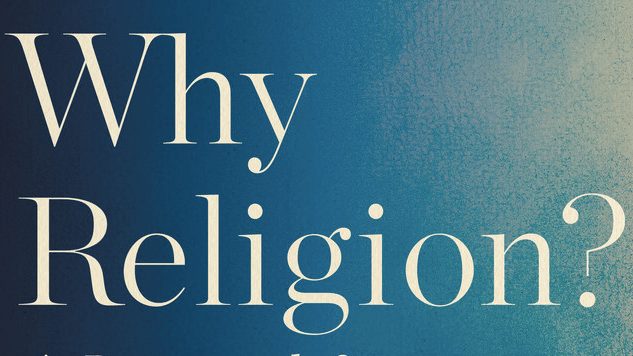Why Religion? Elaine Pagels’ New Book Reveals the Power of Religious Rhetoric

Elaine Pagels’ memoir-cum-meditation, Why Religion?, is not in the business of providing definitive answers to its eponymous question. That is was written at all is answer enough.
Why Religion? details Pagels’ impossible pain after losing her young son to disease and her beloved husband to an alpine fall, keeping its views on the subject catholic—small “c” catholic, including not only the accepted and heretical views of Christianity, but also Buddhism, Judaism, the worship of ancient Greeks and Egyptians, and the societal contexts in which all occurred.
 The language of religion is particularly powerful. Contained within Christendom alone are notions of original sin, the inequity of the sexes, and the compassionate directive to do unto thy neighbor as one would have done to thyself. Rhetorical power is to be expected of stories meant to mitigate and align the very forces of nature and the universe itself—deific beings whose domain extends from the environment to math. We have God(s) to make sense, to divine understanding from what could very well be chaos, to sink anchors into the sea of numbers and variables and laws and acts designed to drown our collective, overly-intelligent species. Did not the forbidden fruit, whose flesh provides knowledge of good and evil, promise death?
The language of religion is particularly powerful. Contained within Christendom alone are notions of original sin, the inequity of the sexes, and the compassionate directive to do unto thy neighbor as one would have done to thyself. Rhetorical power is to be expected of stories meant to mitigate and align the very forces of nature and the universe itself—deific beings whose domain extends from the environment to math. We have God(s) to make sense, to divine understanding from what could very well be chaos, to sink anchors into the sea of numbers and variables and laws and acts designed to drown our collective, overly-intelligent species. Did not the forbidden fruit, whose flesh provides knowledge of good and evil, promise death?
This power has inspired many of our most noble efforts. Think schools, hospitals, charities; think the Sikh langar, the feeding of food to any and all who come for it, and try not to weep at its beauty. But in 2018, as the Second War of Ideas pits strongmen against democracies across the globe, religious rhetoric’s darker power is more cogent. Few things inflame like the call to crusade; legion and lethal are the soldiers who believe that their cause is “right”—that His judgement guides sword and arrow and bullet and missile as sure as anything the military-industrial complex could invent.
The Book of Revelation, Pagels explains, was written in war after John fled the Romans who had laid down the Jewish rebellion and razed the holy city. Its menagerie of monsters and characters—the beast, whose seven crowned heads are emblazoned with the names of blasphemy; the falling star that turns water to poison; the Whore of Babylon and the Dragon, who is the old foe Satan—are frightening forces that have had numerous enemies of numerous societies grafted upon them as an excuse to wage war. As Pagels writes, even those who have not read Revelation have absorbed its primal message: war is the way.
Stirring as they are, it is little wonder that Biblical language and imagery are laced throughout human history. From the crusades to the “Battle Hymn of the Republic” to Bush’s leveling of Baghdad to jihad; from the Evangelical death cult whose influence extends from megachurches to the capital building and whose policies are meant to bring about John’s end times to the despot and would-be despot who promises messianic messages of deliverance; from corruption and crime, the sins of the socialized world deliver the impetus of the Second War of Ideas.
This is amphetamine language, which clouds vision in a martial mist—there is Mars, Roman God of War, right there!—and which beats the heart against the sternum, more violent with every passing moment. It is being invoked to dramatic effect across the United States and the United Kingdom, Hungary, the Philippines, and Brazil.
Pagels reveals that Revelation’s rhetoric should instead be recognized and weaponized in the one righteous cause: the advancement of all God(s)’ people.
B. David Zarley is a freelance journalist, essayist and book/art critic based in Chicago. A former book critic for The Myrtle Beach Sun News, he is a contributing reporter to A Beautiful Perspective and has been seen in The Atlantic, Hazlitt, Jezebel, Chicago, Sports Illustrated, VICE Sports, Creators, Sports on Earth and New American Paintings, among numerous other publications. You can find him on Twitter or at his website.







































